|
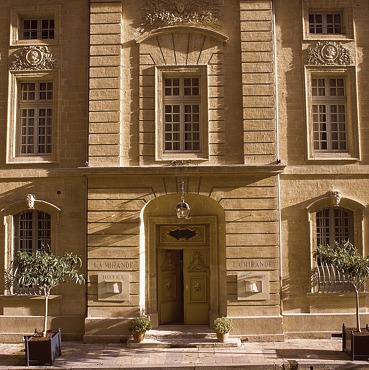 |
|
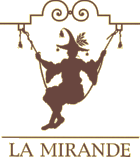 |
|
| Avignon,
France receives |
|

Extraordinary - Merit
November - 2005 |
|
5 Stars
& 4 Stripes
Hotel & Service |
|

The Ultimate
Award:
Seven Stars and Stripes™ |
|
|
|
| A great time to visit the south of France is November.
The weather was strikingly mild, with almost spring-like temperatures and the
'Mediterranean feeling' set in as soon as we opened the doors of 'Aeroport
Montpellier Mediterranee'. Our driver expected us. It took us a good forty
minutes to ride from AMM to the heart of Avignon, one of the most beautiful
cities in Europe and home to about ninety thousand people. Due to its
well-preserved architectural heritage the ancient city features a remarkable
Gothic open-air spectacle. Avignon belongs definitely on the list of 'most
ancient cities in Europe', dating back to 3000 BC. Besides, Avignon is today
not only culturally but also economically and administratively the capital of
the Provence. |
|
| “In short, Avignon is a historic treasure chest of great
magnitude.” ~ TBP |
|
| We arrived at the front steps
of an elaborate town house dating back to the 14th century. A grande dame is
the La Mirande hotel at first sight. As our driver opened the automobile doors
we stepped rather humbly out on the quiet cobble stoned square, then looked up
at the awe-inspiring, historical façade that was created sometime in the
17th century. This excellent period restored former cardinal's home is today a
hotel of great distinction, which we decidedly recommend as base for the most
discriminating traveler while visiting Avignon. It is a distinctive, small
hotel, located within the historic stone walls of Avignon. It made us think
that this was going to be an unforgettable adventure for us. Until 1987, when
the three year conversion project began, this house was home to leading
families of the obsolete city. In the second half of the 19th century a mayor
of Avignon lived in this very town house and it is said that he was an intimate
friend of Napoleon Bonaparte. |
|
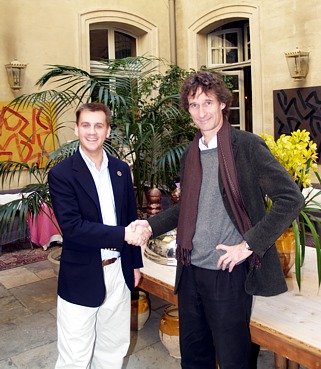
Thorsten Buehrmann & GM Martin
Stein |
|
|
| "Bienvenue" ~ Welcome! Check-inn was quick and
accommodating. As we looked around in the small, but welcoming reception area,
we were breathing in the profound importance of 18th century wall coverings,
held in warm earth tones, combined with the scent of freshly-cut flowers.
Carefully chosen, authentic oil paintings and tapestries matched the sparkling
chandeliers in colors and style! The spotless public areas and halls were
decorated in time period, with great attention to the smallest
detail. |
|
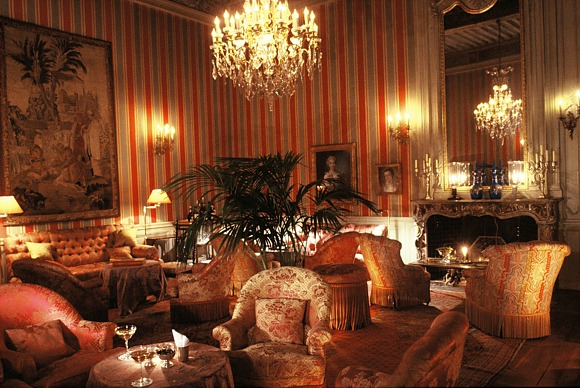
Please take a closer
look |
|
| As the bellman opened the door to my accommodations, I
felt at home. A lovely dressed sleeping loft and an adjoining living room with
a secretary, harmoniously matched window and wall hangings and complemented
historically accuracy of floor coverings and hand-blocked wallpapers. In the
bathroom I found a tub and a shower stall with a enhanced rainforest
showerhead, a classy double vanity sink with the private areas separated by a
wall and all that on natural polished marble floors. My wife is infatuated with
antique marble floors. I needed one desperately, a rain forest shower, that is.
As I unpacked my Rimowa suitcase I realized that there was no television in my
suite; at least that is what I thought. While my eyes were wondering around the
bedroom, I couldn't help but admire the eloquent time appropriate décor,
ever reminding myself that the suite was serving the affluent guest just about
a decade. I dialed '0'! Only to find out that the Plasma HD (high definition)
TV was part of an antique, golden, oversized, framed mirror. As I touched the
remote control the mirror turned into a TV screen, awesome. Strangely enough,
one of my favorite movies, 'Planet of the Apes' by the late French novelist
Pierre Boulle was running. Boulle is also the author of the internationally
acclaimed book 'The Bridge on the River Kwai'; he used to live in Avignon until
he passed in '94. There are no coincides, they say. |
|
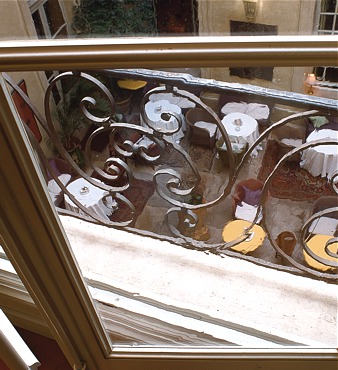
Please take a closer look |
|
But, let me tell you about
the unique TV screen solution. Owner and GM Martin Stein is the man who thought
of this. There are plenty of antique, or antique looking hotel rooms to be
slept in all over the world, but nobody ever solved the 'modern TV dilemma' as
time appropriate as Mr. Stein did. Martin replaced the HD TV frames with an
antique picture and / or old mirror frames. Each of these intricate details
were either restored or created and then covered with gold-leaf, a trade that
only about a dozen experts in France are capable of doing today to this extent.
Martin is dedicated to supporting the old crafts. As I looked out of the
windows on the square I discovered that the windows were of antique glass,
again, created in the traditional 'new' methods of window pane making; with
modern technologies displaying the right elements of color, texture and
variation that are found normally only in truly old glass. |
|
|
Martin explained that this window glass is made
entirely by hand and subject to the skill of the master glassblowers of France.
The French developed their improved plate glass method in the latter 18th
century. First a glass plate is poured out in a mold, and then the glass
receives extensive grinding and polishing. The depth of color and clearness of
the windows blew my mind. I believe that this 'true' time period project was
expensive. The designer of these delightful rooms was most imaginative and
deserves an award for his detailed craftsmanship. Each one of the twenty-seven
rooms is a work of art, unique, and individually decorated.
On the way
downstairs for dinner we took a peak at the La Mirande's cozy bar, stuck our
heads into the well dressed restaurant with a small, intimate cooking school,
the delightful tea room, passed the little boutique and opened the door to the
a most charming house garden. Unfortunately the cooking school had to wait
until the next day, for tonight we were going to dine in town. |
|
| Leaving the La Mirande was
almost impossible, we met nice people on the way out and chatted for awhile
then finally proceeded as directed to a restaurant downtown. The air was mild,
the birds were still 'conversing' ;) ~ and a jacket was enough. Avignon is all
together a medium-sized city with an affluent well-dressed population,
students, children, seniors, bicycles - and an appealing, pedestrian-friendly
downtown feeling. For tonight we had reservations at the L ?Isle Sonnante
restaurant, close to the La Mirande and inside these romantic walls of Avignon.
We passed lots of nicely decorated shop windows and a few more or less other
busy restaurants; finally we were going to dine. |
|
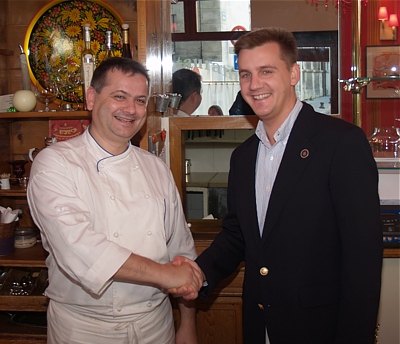
Boris Chevtchenko & Thorsten Buehrmann |
|
|
| As we entered the door to the L´Isle Sonnante, a
restaurant with a most charming old-fashioned dining room that was serving
authentic French cuisine, we became suddenly aware how hungry we actually were.
The small restaurant reminded me of the French word 'bouchon' which describes a
particular style of cafe that exists in the Province of Lyon for centuries. The
L´Isle Sonnante lives up to the term 'bouchon' - bistro fare with a great
value in price and quality. The exquisite décor was the perfect setting
for Boris Chevtchenko's culinary delights. Chevtchenko brings many years of
experience to the table, serving delicious old-fashioned French cuisine. The
meals were flawlessly executed in every aspect, a delight to both the palate
and the eye, creating a particular local dining experience of global scope in a
small bistro. |
|
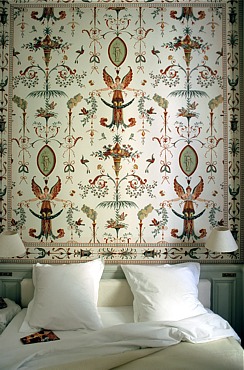
Please take a closer
look |
|
I woke up after an
undisturbed night's sleep in my luxurious bed to an annoying sound. "Oui"?
Arno, my photographer, had the audacity to knock at the door ;), he insisted to
download his photos on the new Samsung laptop, since he had problems with the
older Apple system. So we discussed the 'delicious' dinner photos from the
night before, hung out in our comfy bathrobes, sipped a hot cup of French roast
coffee and witnessed the little city waking up on the cobble stoned square.
This was going to be a fine day. After I finally got rid of Arno, I soaked in
the luxurious tub for a while with a bath foam that my wife would have found
irresistible on me ~ oh well.
A sumptuous formal breakfast was served
in the Salon Jardin. A smiling, friendly face inquired after our wishes. As I
glanced over this lavish breakfast buffet I thought that there was really
nothing missing. The appealingly decorated breakfast room with wallpaper in
various shades of soft pink and off-white was accentuated by the tiny, pink
roses and the fine porcelain on the tables. |
|
|
| Smaller paintings and framed photography were
carefully placed, romantic-like in the room and pleasing to the eye. We admired
the old fashioned polished wood floors with the whole room bathing in light
pink. Arno got up and out on the balcony to take pictures of the wondrous,
whimsy little garden nicely protected from the Mistral - a cold, dry wind that
blows in the fall from the northwest over the coast of the Mediterranean Sea.
It sometimes comes in intervals and can last from between three to nine days.
|
|
| The breakfast alone is worth
a visit here as most dishes were home-made and cooked with freshly harvested
country produce and farm fresh dairy. The coffee, French roast to die for was
strong and merciless; I was awake! The freshly baked traditional baguettes, and
all home-made recipes that represented the authentic, oh so celebrated French
county kitchens are here for a sheer morning delight! I must mention the
yogurt, served in an earthy pot and to be had with fresh fruit syrup, the best
I have ever tasted. Arno indulged in 'Les Fromages' - French Cheeses. He
especially liked the Comte - one of the most popular cheeses in France. He
tried a piece of Camembert; a lovely village in the Normandy is the country
home of this world- famous cheese. To test the breakfast chef I ordered a
typical American breakfast, ham, bacon, home fries and the trimmings; let me
report that it was most delicious and for sure American style. |
|
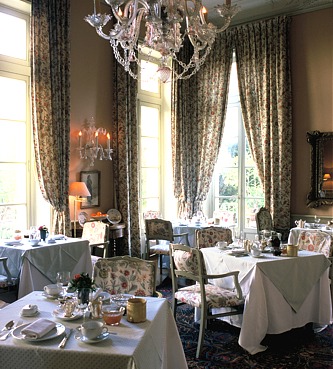
Please take a closer
look |
|
|
| After breakfast we went downstairs into the basement.
At the historic 'Cooking School' we experienced the highest level of
personalized culinary teachings. One of the world's richest food milieus, where
everything from the freshest seafood from the Mediterranean coast, produce from
organic gardens, fresh seasonal fruit to fresh yoghurt, butter, eggs and
cheeses lies at their doorsteps. The world deserves a school like this. The
‘Cooking
School’ offers hands-on culinary classes for groups up to fourteen
people, and yes - we got to eat it all. The 'morning cooking class' is a
well-designed program for the novice to the expert and they allowed us to
leisurely dine for lunch. |
|
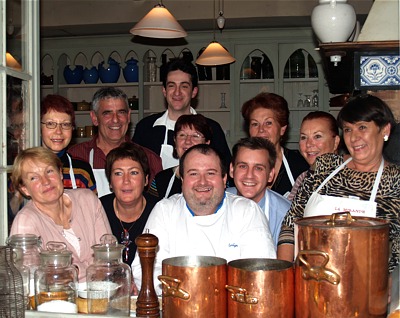
Please take a closer
look |
|
School Chef-de-Cuisine Eric
Sapet taught in the tradition of the French' new world cuisine, with an
emphasis on morning caught shell fish. "POM, POM, POM, POMMES" was the name of
his class and included Scallops marinated in an apple juice vinaigrette (here
we learned how to chuck scallops) - Curry mayonnaise, green apples and cider
jelly - Canadian Lobster in its shell, apple purée and parsnip chips,
apple mustard (we learned to
clean
out the lobster the traditional way) and as the grand finale - a soft cake
of caramelized apples with cinnamon ice cream. We had the time of our lives and
do believe that the class should not be missed. |
|
|
| The old kitchen featured a fabulous open- hearth fire and
charming brick walls; raw wood distressed ceiling beams and timbers, decorated
in the French Country style. Rustic furniture supported the ambiance of the
curved panels, wooden open shelves stored pots and pans and tableware. A large,
rectangle dining table with low-shine finish was used as additional cooking
space for the food preparations and would later on become our dining
table. |
|
| Eric had us cook
fresh
sea scallops (plactopecten magellanicus) in his class, which are the
largest of the scallop family. The raw meat was creamy white in color, but it
is sometimes slightly orange due to the food algae they consume. Scallops have
a distinct, sweet odor when they are fresh and these were just right. Eric
showed all of us in the group how to insert a sharp thin knife into the scallop
and glide the blade across the inside of the shell with the intention of
cutting the abductor muscle. To Arno's big surprise the shell opened up
immediately. Then he forced it open the remainder of the way with his hands,
and cleared the viscera away from the meat 'button' in the middle. A 'button'
is to be found on both sides of shell. After a good rinse we were ready to cook
them. We learned that there are many ways to prepare scallops and that they
overcook and toughen easily. As soon as they lose their translucence color and
turn opaque, they are done. |
|
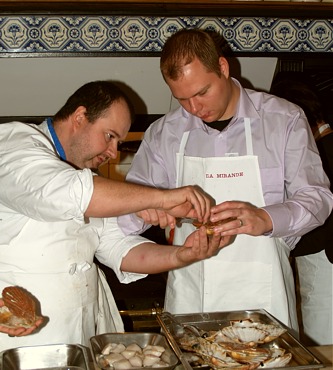
Eric Sapet &
Arno Goudschaal |
|
|
| At dinner we tasted a wonderful white wine ~ A DOMAINE
St Nicolas Le Haut des Clous 2002 ~ Fiefs Vendeens (south of the Muscadet zone
near the mouth of the Loire). An excellent choice. The legacy of French wine
began with the Middle Ages, and has lead to France being the # 1 wine exporter
in the world. |
|
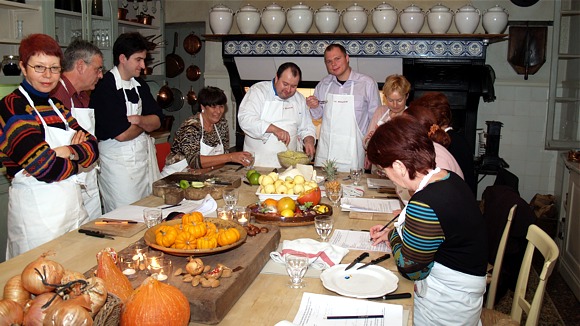 |
|
| After our visit at the famous
Cooking
School we went on a little sightseeing tour just across the street to the
Palace Villeneuve-lez-Avignon, the residence for Popes and Cardinals of the
Papal's Court, until today remarkably preserved. The La Mirande Hotel is
located across the street from the
Pope’s
Palace, and was formerly a cardinal's residence. “When I look at the
buildings of which some are already 700 years old and I see how well they are
holding up to the challenges of the environment, then I wonder if we might want
to adapt back to the building style of the old masters…” said Martin,
referring to a ten year warranty one gets on a new house these days
;)~ |
|
 |
|
| Avignon's history weaves effortlessly into that of
prevailing France. Besides todays culture we may not forget the most famous
bridge in its long history: Saint Bénezet. You might have heard the song
'Sur le
pont
d'Avignon, l'on y danse, l'on y danse...'? 'Pont d'Avignon' is the bridge
'Saint Bénezet'. Legend insists it was built by a shepherd,
'Bénezet', after a numinous vision. Then, it was the only bridge
allowing crossing the Rhone River. After the bridge was completed in 1185, it
had to be re-constructed several times over the years although only four arches
kept on, one cannot resist walking over it. |
|
| "The future is made of the same stuff as the present." ~ Simone Weil
(1909-1943) French Philosopher |
|
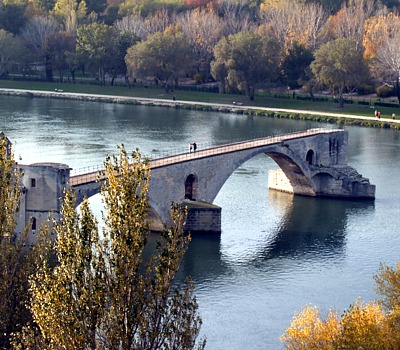
Please take a closer
look |
|
The
Pont d'Avignon, more properly the Pont St-Bénezet, is a famous
medieval bridge. The bridge originally spanned the Rhône River between
Avignon and Villeneuve-lès-Avignon on the left bank. It was built
between 1171 and 1185, with an original length of 2950 ft, but it suffered
frequent collapses during floods and had to be reconstructed several times.
Over the centuries, it became increasingly perilous as arches collapsed and
were replaced by rickety wooden sections. The bridge was finally put out of use
by a catastrophic flood in 1668, which swept away much of the structure.
|
|
|
| It was subsequently abandoned and no more attempts
were made to repair it. Since then, its surviving arches have successively
collapsed or been demolished, with only four of the initial 22 arches remaining
intact today. The bridge has achieved worldwide fame through its commemoration
by the song "Sur
le pont d'Avignon" ("On the bridge of Avignon") although nobody really
knows who wrote it. |
|
"Bénezet, take your shepherd’s staff and go down to
Avignon, the capital of the river.
You shall talk to the inhabitants, and
you shall tell them that a bridge has to be built" |
|
| The legend of St.
Bénezet has it that a young shepherd by the name of Bénezet came
to Avignon from his native Ardèche, in 1177. He said that he was sent by
God to build a
bridge
in Avignon. At first, he was considered to be crazy, stating that he had
heard a voice from heaven say to him: “ Bénezet, take your
shepherd’s staff and go down to Avignon, the capital of the river. You
shall talk to the inhabitants, and you shall tell them that a bridge has to be
built" |
|
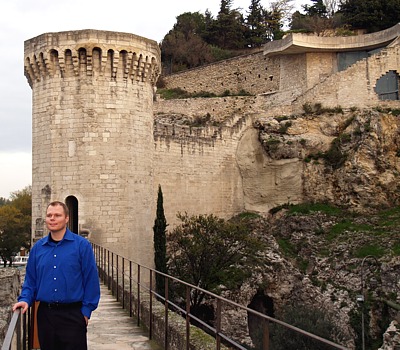
Please take a closer
look |
|
|
|
| Leaving the bridge, we climbed on a winding staircase
to the top of the Rocher des Doms, the rise that overlooks the Rhone River with
views of Villeneuve and the ‘old city’ of Avignon. It was here where
the initial populace of Avignon lived some five thousand years ago. In 1830 it
was cultivated with gardens and terraces, a favorite spot for visitors today.
With so many impressions of the fascinating city and Arno’s Olympus E-Volt
(E-300) giving him problems since the software update, we finally decided to
wrap up and discover one of those veiled secrets that culinary lovers usually
speak of only in subdued voices. |
|
 |
|
| American Dream Cuisine™ |
|
La
Mirande Restaurant
Avignon, France receives |
|

Society -
Extraordinary
November - 2005 |
|
6 Stars
& 5 Stripes
Cuisine & Service |
|

The Ultimate
Award:
Seven Stars and Stripes ™ |
|
|
|
| "Quel bon accueil!" Arno our photographer was standing
next to the entrance to La Mirande restaurant with his nose buried in his
French phrase book. "What a nice welcome!" he translated smiling as we were
being led into the restaurant by Chef Sommelier David Ripetti. By simple
proximity to the Papal Residence, La Mirande restaurant is in a hallowed
location well endowed with the virtues of the classical cuisine of Provence
while seemingly safeguarded by the divine power next door. Its strategic
position on a tranquil cobbled square at the foot of the 17th century Papal
Palace is both central and yet off the beaten path. It wasn't long ago that the
Stein family fell in love with the property and followed their dream to
re-invent the definition of luxury based on consideration of the comfort of
guests and not to the cost of achieving that goal. |
|
| Sommelier David Ripetti
wondered out loud "How was your day in Avignon?" in keeping with the genuine
heart felt concern the entire staff had shown us throughout our stay. He led us
slowly to our table, past the priceless Aubusson tapestry draping the wall, all
the while Arno and I were straining our necks to take in the absolutely
stunning 15th century French ceiling. I began to recall our day, filled with
the clean crisp air of Provence, narrow cobbled streets slowly revealing their
hidden antiquarian treasures at every turn, monumental Roman ruins some of
which rival even those in Rome and especially the flowers, their perfume and
their colors. Sommelier David Ripetti sat us right next to a Renaissance
Belgian tapestry that seemed to cascade behind us on the wall. We were indeed
ready for the culinary event to come. Our day was filled with excitement and
pleasure, the kind of enjoyment that quietly ends with a celebration of
cuisine. |
|
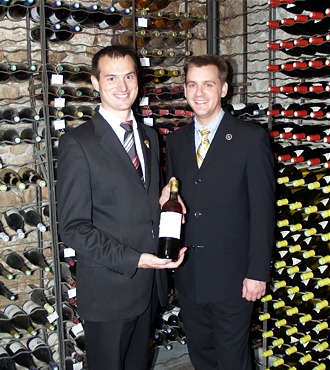
David Ripetti & Thorsten Buehrmann |
|
|
| The staff of La Mirande worked hard to make us feel
invited, to feel that our presence was requested even appreciated. A list of 6
types of bottled water found its way to our table making it more difficult to
decide on the Chateldon 1650 'gas' sparkling mineral water. We were told that
at one time only King Louis IV was allowed to drink it because of its reputed
healing properties. We dared to challenge its affect on a whopper of a hangover
should the need arise. A special bottle of Castelas Huile d'Olive, a superb
olive oil from Provence was poured on small plates and it proved to be peppery
on the palette with a decidedly subtle taste of artichokes and sweet almonds.
We relished it by dipping bits of homemade bread baked with walnuts and figs in
this fragrant pool. We marveled at the hand-blown Riedel wine glasses that so
gracefully dressed the place settings on the formally adorned table. We decided
to check out the menu and as we focused you could distinctly hear the soft
soothing harmonic melodies of a harpsichord playing a Napoleonic
march. |
|
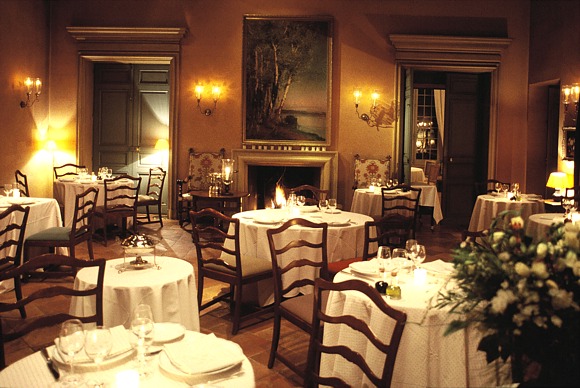
Please take a closer
look |
|
| An irresistible archetypical rosè sparkler from
Laurent Perrier was now being poured into slender delicate fluted glasses while
we thoroughly scoped out the menu. With a flavor profile dominated by red
fruits particularly strawberries, it beckoned recognition of its 100% pinot
noir roots. Things began to move rather quickly from here on in since Executive
Chef Sébastien Aminot instructed our servers to pull the menus so that
he could begin to demonstrate his creative cuisine in full force. |
|
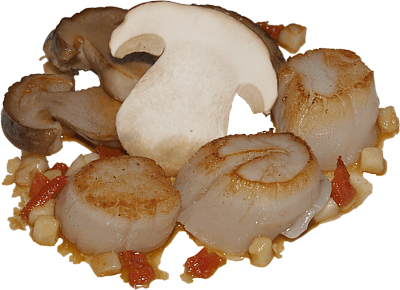 |
|
There was a bustle of
activity as our four servers coordinated their movements around our table
remembering even to refold Arno's napkin before he returned from the restroom.
We were presented with a Tuna Carpaccio with Blini topped with Sevruga Caviar
and a Tri-layered Patè with Sliced Black Truffles and Edible Flowers. We
were awed by the painstaking detail endowed upon these works of art noting that
even the smallest speck was a carefully carved bit of food. I saw Arno
scrutinizing the table for something and realized he was looking for salt. It
was only after moving things around in searching that he actually picked up the
very thing he was looking for. There in his hand was a crucible filled with
coarse salt and equipped with cute pocket-sized ladle for portioning. By the
look on Arno's face I could tell that he was quietly wishing that nobody saw
his obvious discovery. |
|
|
| Plates were cleared with white gloves on and we were
prepared for the next course with fresh silverware. An alert server quickly
crumbed our table, since there were remnants of the scrumptious bread leading
to the plate of oil like a Hansel and Gretel fairytale. Next up was Pan Seared
Day Boat Scallops with Porcini Mushrooms as another appetizer and of course it
was all I could do to refrain from asking for more. These scallops were so very
tender in the center while the caramelization of the outer surface produced a
sensation of flavor bursting in your mouth. But there were entrées yet
to come. |
|
| The focus now became the main
courses, which were being placed in position on the table. For Arno there was
Venison Filet with Braised Vegetables ala Provence in Bordelaise Sauce and for
me it was Roasted Sea Bass with Fleurettes of Calamari in a Rougaille Sauce. As
I savored the first bite of this artistic arrangement I was reminded at once as
to the firepower of the Capsicum. This classic French tomato sauce comes from
the Mascarene Islands and is typically spiced up in with the addition of Carri
chiles. I concluded that it was time to sample another sip of the Chateldon
1650 mineral water to see if I could somehow benefit from its purported healing
powers. Arno was busy dissecting his entrée to the sounds of muted
pleasure together with gestures of raised eyebrows and satisfied nods. 'I think
he liked it' was the thought that flowed through my mind as the table was once
again being prepared for the next course. |
|
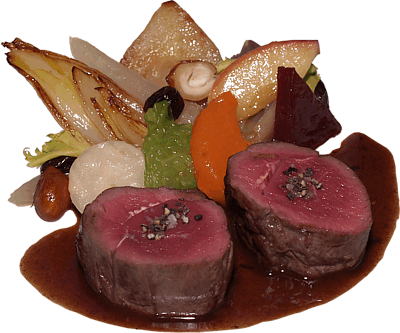 |
|
|
Oddly enough the wine selection for both entrees was a
very drinkable bottle of CNP Clos du Caillou Les Quartz 2001. It was decidedly
a Chateauneuf du Pape of the finest quality with the unmistakable signature of
the Grenache varietal. It consistently earns scores of 90 or above each year
and the grapes come from vines of at least 75 to 100 years old in fields
exhibiting large chunks of quartz in the soil. It is harmonious and silky
smooth with red currents and violets coming to mind supported by red and black
forest berries, adding focus to the extremely smooth oak-free finish.
Arno and I sat for a moment in reflection of what we had just
experienced at the hands of Executive Chef Sébastien Aminot. No doubt to
us the cuisine was resplendent with originality, artistry, and resourcefulness
combined with outstanding flavor profiles as well as good timing and pace. We
noted preparations being made for the dessert course and our server approached
with a bottle of Ron Zacapa Centenario 23 Year Old Rum from Guatemala. As I
gazed at the bottle I wondered what this had to do with the entire evening. I
watched as our server carefully poured its full bodied amber liquid into two
brandy snifters exactly half an inch each, all the while gently caressing the
bottle like a new born. I lifted the snifter to my nose and immediately
realized that I was in the presence of something great. |
|
“Visiting France, it was impossible to imagine passing up the
cheese cart, which presented
an exceptional selection. The cheeses are
usually arranged from left to right in the order
of type of milk, from
front to back in order of increasing firmness.” ~ TB |
|
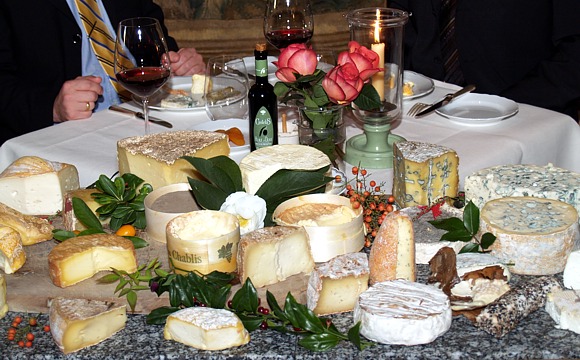
Cheese-Cart, please take a
closer look |
|
"The French... have surrounded food with so much commentary,
learning and connoisseurship as to clothe it in the
vestments of
civilization itself... Cooking is viewed as a major art form: innovations are
celebrated and
talked about as though they were phrases in the development
of a style of painting or poetry...
A meal at a truly great restaurant is a
sort of theatre you can eat." ~ Richard Bernstein, The Fragile
Glory |
|
| The first sip spelled Caribbean spices and vanilla
with a type of complexity that would make it a crime to use it for a Mojito; it
demands to be savored unadulterated and unaided. Just as the cuisine endorphins
started to kick in there arrived a sort of pre-dessert or little creative treat
of Tiny Shot Glasses filled with Coffee Gelee. Oddly enough this only added to
the sublime pleasure of winding down after a great dining event and prepared us
for a sort of dessert 'grande finale'. |
|
 |
|
A super looking Granny Smith
Apple over Torte with Ice Cream and Caramel Sauce was placed in from of me and
for Arno it was Crème au Chocolat et Vanille covered with Chocolate
Ganache and Caramel Filigree. Our evening was one of high cuisine and expert,
caring service and it was on that note that we decided to take our double
espressos to the well stocked ornate bar for a change of scenery. I must
conclude that our experience was one of fine French dining owing much to the
extreme attention to detail at every turn as well as the intrinsic desire for
perfection; the same all the time. |
|
|
| Sébastien Aminot is the Master Chef de Cuisine
at the La Mirande. He previously worked with Alain Ducasse at the
Plaza-Athénée in Paris, which is located on the prestigious
Avenue Montaigne. In 2000 King de Cuisine Alain Ducasse joined their team and
Sébastien Aminot’s style though completely unique, was eloquently
formed by his world renown teacher. |
|
| "Aminot focuses on
ingredients that come from the country, his technique is subtle and most
appealing, his essence inspires ecstasy. Aminot has a unique talent for color
concertos; his plate presentations don't get much art-zier than this. This
young chef found a balance between the old and the new. His success is his
passion; he can’t loose with his focused energy and will leave a legacy if
he keeps it simple. We had a wonderful meal, with fondest wishes." ~ TB
|
|
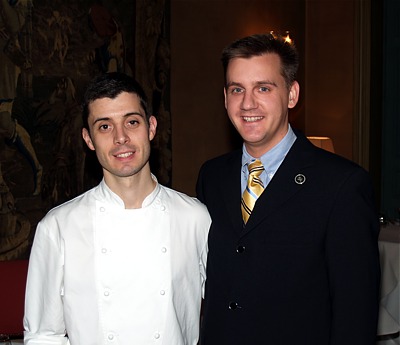
Sebastien Aminot & Thorsten Buehrmann |
|
|
| “A chef’s kitchen is his church, he doesn’t cook, he
worships.“ ~ TB |
|
| Executive Chef Sebastian Aminot, a native to the
Poitou Charente region, acquired an apprenticeship under Monsignor Ripauli
until got his breakthrough under high caliber world renowned Alain Ducasse. It
was with Ducasse that he got acquainted with a more contemporary cuisine, which
leads to an explicit harmonious style of his own. Still relatively young at
age, this chef has outstanding imaginative skills and must be
watched. |
|
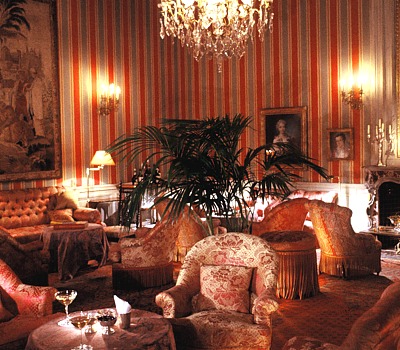
Please take a closer
look |
|
A true gourmet meal deserves
a grand finale and that shall be a cognac and a cigar in France. In our case -
it was a Long Island Ice Tea and for Arno a Mojito. The Long Island Ice Tea was
made with freshly brewed black tea, just the way it should be. I was served a
Long Island Ice Tea in the Hamptons where the tea was unfortunately substituted
with coke, I didn't like that. The cozy, definitely 'not anonymous' bar lounge
pulled us in. Besides a decor that would put some museums into shame, there was
a selection of interesting coffee table books and conversation pieces,
nonetheless worthwhile amenities. |
|
|
| Back up in my suite the maid had turned down the bed
and as I looked at the fine-spun French linens I thought about the term 'duvet'
and decided to look it up on my Samsung laptop. I took me while to figure out
how to get online due to the fact that the little cards created by the phone
company displayed numbers that were arranged in a rater irrational manner.
Finally I connected, got a call in on Skype to my office in New York and then
on Google I found the exact definition of what was covering my bed. A Duvet
(pronounced /du:ve/, from the French duvet meaning "down") is a soft flat bag
filled with down or feathers, or a combination of both, and is used on a bed in
lieu of the traditional set of sheets and a blanket. Duvets were originally
used in Europe but have become popular throughout the world in the late
twentieth century. The original duvets came out of rural Europe and were made
of Eider, a type of duck's down, which is well known for its usefulness as an
insulator. A duvet cover is a large sort of pillowcase that is used to encase
the duvet and protect it from getting dirty. However, these luxury covers no
longer had to wait. I sucked on the little chocolate from my nightstand, looked
up at the stars trough the charming windowpanes ... and was gone. |
|
| I woke up to a clear sky the
next morning, the Mistral was still blowing, but the sun already warm and
bright, and the blue sky exhibited an extraordinary depth and softness. I was
reminded of Rome. After a wonderful, mood altering breakfast at the 'Salon
Jardin' (Arno was hysterical over the problems with his Olympus E-Volt
software) a sense of indescribable contentment came over both of us (See the
view from the window during summer season). We met with Martin Stein for our
final excursions. As we stepped out on the square, we nodded back at villagers
who were greeting us with the friendliest demeanors, unfortunately we didn't
understand their language and so a chat was impossible. Some laughed, nodded,
and went on their merry way. The mistral blew intensely, I was glad that I had
my overcoat. |
|
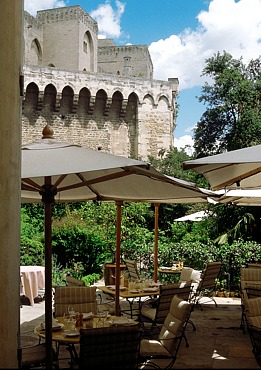
View from the breakfast
room |
|
|
| We met up with our guide, Bernadette M. a Travel &
Events Consultant. Bernadette suggested a visit at the Musée de l'Arles
Antique first, to better understand the complexity of the history of the
fascinating city and its surrounding area. It seems that France, which is about
the size of the state of Texas, seamlessly combines a rather mind-boggling
number of important epochs. |
|
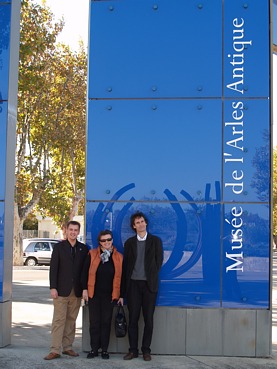 |
|
The modern museum ‘Musée
de l'Arles Antique’ in Avignon, is a triangular structure (designed by
Henri Ciriani) which celebrates its 10th anniversary this year, is found on the
site of an enormous Roman racing stadium. It retains one of the world's most
famous collections of Roman Christian sarcophagi as well as a splendid
collection of sculptures, mosaics, and inscriptions from the Augustinian period
to the 6th century A.D. About a dozen detailed models show ancient monuments of
the region as they existed in their own times. The permanent collection
includes jewelry, mosaics, town maps, and 4th-century carved sarcophagi from
Les Alyscamps. We got to understand the day-to day-life in Roman times and
found most exhibitions easy to comprehend for us foreign language visitors. The
exhibition halls were light-filled and spacious, school kids were visiting the
same day. This museum is significant and a must to comprehend Roman culture and
understand the cultural development of the region. |
|
|
| On the way to
Van
Gogh's café in Arles through the countryside we discovered inspiring
valleys and fields that are home to precious vineyards and traditional small
villages. The heart of Provence are the hills that tie the sea to the Alps.
These are the cultivated lands of slanting vineyards owing to the colorful
scenery that charmed Van Gogh (Arles), Chagall or Giono. In the Provence (or
the Midi) the local people have an almost 'sing-song' accent that in my opinion
evokes their whole relaxed lifestyle. |
|
| One the way Bernadette
insisted that we'd stop and look at a well-known sculpture commonly known as
the 'La Tarasque'. The saga has it that a few thousand years ago when the Roman
Empire reached out to Egypt, (we all know about the story of Cleopatra and
Cesar) wild animals were shown, used, and / or fought in the arenas to the
gruesome entertainment of the people. An Alligator might have escaped and
supposedly came in through the river and killed someone. The 'monster' that was
not recognized by anyone in the area obviously has claws and a hard shell.
Actually here it looks a little but like a turtle. Bernadette's theory is that
it escaped from a coliseum. |
|
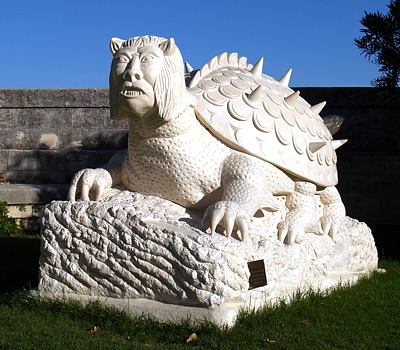
Please take a closer
look |
|
|
| Van Gogh, who lived in Arles for a good portion of his
life, tagged along with us all the way to the
Musée
de l'Arles Antique. We learned of the many sites where the celebrated,
infamous artist left his marks, including La Maison Jaune, Le Café la
Nuit, Le Jardin de l'hotel Dieu and St Paul de Mausole at St Rémy de
Provence. It was there that he checked himself into an asylum after he cut off
a piece of his ear. Van Gogh left Paris and moved to Arles in February of 1888,
when city life and living with his brother became unbearable for
him. |
|
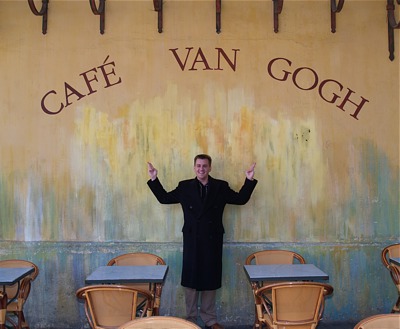
Please take a closer
look |
|
He was so impressed with the
local landscape that he wanted to build a 'colony of the arts'. He created a
celebrated series of yellow sunflower paintings for this very purpose. Only
Paul Gauguin, whose simplified color schemes and forms (recognized in today's
arts world as synthetism) followed Van Gogh's invitation. The admiration was
mutual, and Gauguin painted 'Van Gogh painting sunflowers'. However their
encounter ended soon. On December 23, 1888, Van Gogh cut off the lower part of
his own left ear, which he then took to a brothel. He asked for a prostitute
named Rachel, known to him, and handed the ear to her, asking her to 'keep this
object carefully'. Gaugin left the 'art colony' that month. |
|
|
| Just off the Rue du Forum is the Place du Forum and
the ‘Café
Van Gogh’ or ‘Café De La Nuit’. The very Café
that is forever vivacious in his ‘Café la Nuit’ painting.
Vincent van Gogh is venerated as one of the greatest and most famous artists in
history. His life and work has inspired and influenced a great deal of art
history since his tragic death in 1890. In fact, what many people today
consider to be the exemplary ‘artist personna’ is fundamentally a
result of his weight. “A painting in a museum hears more ridiculous
opinions than anything else in the world.” ~ Edmond de Goncourt (1822 -
1896) |
|
| We stopped for a little bite
to eat at the
Le
©ilantro - great name for a neat little, chic restaurant, I thought.
This Asian inspired elegant place was an absolute surprise. Le ©ilantro's
atmosphere hit us as soon as we entered, objets d'art on the walls everywhere.
But people don't go to this little restaurant to look at the art, they come for
the 'Haute Cuisine Couture' - Jerome Laurent's food wasn't 'merely delicious',
he creates serious food. Consider pan-seared tuna , sushi style. |
|
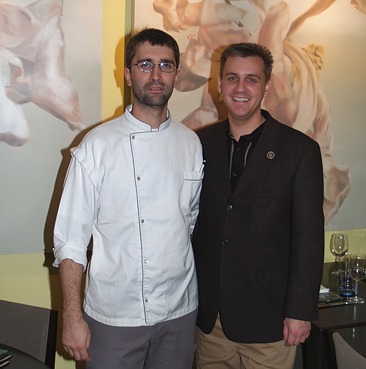
Jerome Laurent & Thorsten
Buehrmann |
|
|
| Arles is the home of the more or less intact outer
shell of a baffling Roman arena, an amphitheatre. I had to remind myself that
taste is relative and that preservations cost a lot of money, which the
community might not have. In the viewer's arena we saw steel pipes anchored
into these precious ruins, unmistakably to use the sites for concerts and bull
fights. The outcome was bizarre, I felt. Later in the airplane I thought about
my feelings in respect to historic preservation and wondered how I would feel
if I would live surrounded by historic walls and buildings 24/7? Would I take
history dating back to 3000 BC less serious? Wasn't it Napoleon Bonaparte who
said: "History is the version of past events that people have decided to agree
upon." |
|
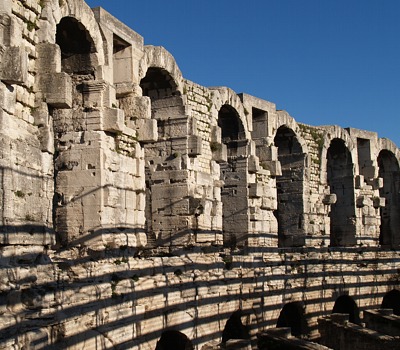
Please take a closer
look |
|
The ancient 20,000-seat
Roman
amphitheater where gladiators once fought to their death is today the
contemporary home to the famous Arles bullfights. In the arena where the
gladiators shattered each other and Christians were fed to the lions, blood
still flows, the blood of the bulls that is. Bull fights in Arles are done the
Spanish way, to the bitter end. If the bull looses an ear, the matador get it
...' |
|
|
‘When in Rome do as the Romans do...’ is
actually no longer true, in Arles we'll do just fine. It is actually
mind-boggling when I think how the population of the European countries and
ergo the world are all connected somehow. The acoustic that supports this
circular outdoor theater was created by the great builders of the ancient times
and still works today for a perfect performance. I feel humbled.
On the way
back we stopped in St. Remy-De-Provence at a famous cookie factory ‘Le
Petit Duc’ on 7 Blvrd. Victor Hugo. - A man of the name Hermann Van
Leeck is here creating the cookies that high-carb-dreams are made of ;)! We
witnessed how the talented patissier created the dough that supports a way of
life in France and makes people line up in the street for more. The little
exclusive village of St. Remy-De-Provence, where Van Gough tried to recover
after his breakdown, reminded us very much of East Hampton. NY, and the
affluent clientele that is trying hard to stay anonymous. |
|
Back at the hotel we followed
a private dinner invitation of Achim Stein ( Martin's father) and the guest
chef de cuisine for a private 'Dinner with Friends' at the cooking school Le
Marmiton, which means simply 'kitchen boy'. Jean-Claude Altmayer was the much
applauded chef-de-cuisine of the evening. The Chef's 'Haute Cuisine' 19th
century ~ 8 pm ~ dinner table is a hot commodity and reservations must be made
long in advance. We were greeted with an aperitif, seated at the 19th century
dinner - kitchen table to watch the maestero a true palate pleaser 'soup to
nuts' dinner right before our eyes on the old wood-fired stove. During the meal
exquisite specially selected wines were presented. This was an extraordinarily
well-executed concerto de cuisine, superbly composed and admired.
During dinner Achim Stein reminisced about his remarkable life. The
true gentleman of the old school is a man-of-many-trades. He and his charming
wife Hannelore have lived all over the world. Achim, who I would consider a
true pioneer and adventurer is a trained engineer, multilingual and even speaks
Arabic. The family searched for a long time for the ideal house and location to
create a perfect time period hotel. Their love of detail and passion for the
arts served as an asset to accept the challenge they took on so willingly as a
family. |
|
|
|
|
| A family project that was finally accomplished with
the Grand Opening of the hotel after a three year ordeal of striving for
perfection. "And here we were sitting on the front steps of our beautiful dream
that had finally come true and where were the guest?" chuckled Achim "Over all
our passionate attention to detail we had completely forgotten that it takes
some marketing to get the message out to the right people." Today the La
Mirande has a relatively high occupancy rate year round and is no longer a
secret to the affluent traveling world. |
|
"Today the La Mirande has a relatively high occupancy rate year round
and is
no longer a secret to the affluent traveling world " ~ TB |
|
Avignon is also about the arts and art festivals
galore , and renowned worldwide for its theatrical significance. Avignon
features some of the most celebrated staged events of world. And that goes well
with good fare. Consumption is a way of life in France and in Avignon we found
people lining up in patisseries and chocolate shops down the
streets.
There's plenty of shopping in Avignon, and there are so many
wonderful and unique shops that I was almost glad that my wife could join me on
this time. I got her a great souvenir to take home; France's other sphere:
perfume. In many of the little boutiques one may design ones very own perfume,
blended from the scents of the flowers of the country and then some.
|
|
|
|
|
by
Thorsten Buehrmann (Piosczyk) & Arno Goudschaal
Editor: Ingrid
Lemme
Editor-in-Chief: John Lomitola
|
|
| © 2005 ~ Seven Stars and Stripes, Inc. |
|
